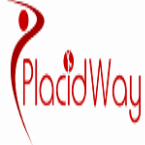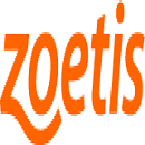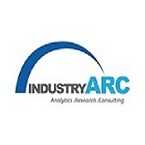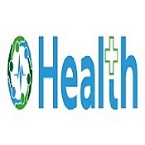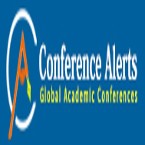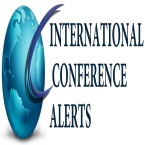Renowned Speakers

Caryn McAllister
Connecticut USA

Fahad-AlKherayf
University of Ottawa Canada
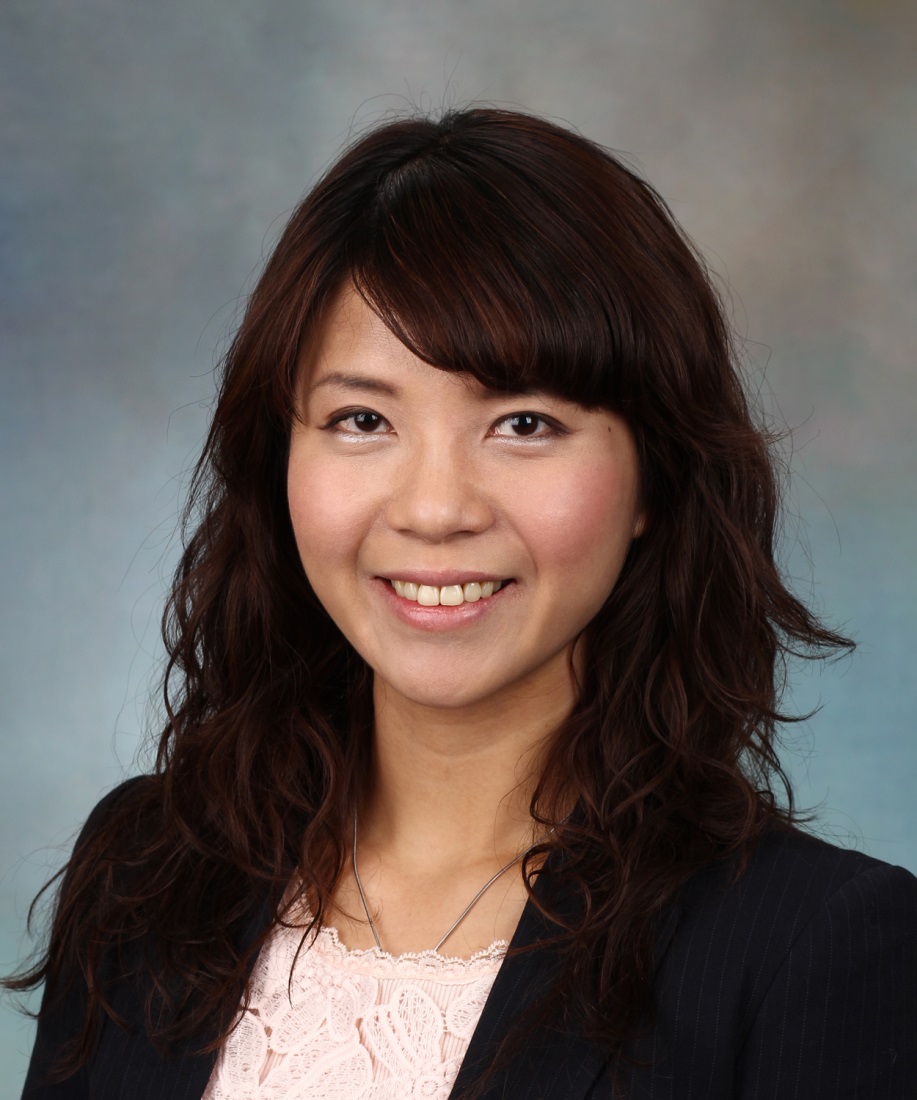
Chia-Chun-Chiang
Mayo Clinic USA

Deborah Summers
Saint Lukes Hospital USA
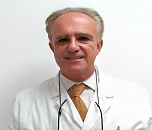
Sergio Mungo
University of Genoa Italy

Georgios K. Matis
Cologne University Hospital Germany

James-Gratwicke
University of Oxford UK

Chethan-P-Venkatasubba-Rao
Baylor College of Medicine USA
Recommended Global Neuroscience Webinars & Conferences
Asia Pacific & Middle East
Canada
Neurology Congress 2025
About Conference
We welcome you and appreciate your participation at the 39th European Neurology Congress, which will be held during November 24-25, 2025 Barcelona, Spain and will be organized around the theme of “Advancing Neurology: Technology at the Forefront of Neuroscience”.Neurology Congress 2025 will be operated by world class experts in the field of Neurology and Neuroscience, International symposiums, B2B meetings, workshops will also be organised to discuss the specific topics in the field of Neurology like Clinical Neurophysiology, Neurosurgery, Neuro Muscular Disorders, Neuro Infectious Diseases, Pediatric Neurology, Neuropathology, Brain Tumor and Neuro-oncology and many more. The conference is aimed to identify the genetic determinants of common disorders to understand the mechanisms underlying human cognition. Neurogenetic Disorders are common among developed and developing countries. Genetic disorders and congenital abnormalities occur in around 2-5% of live births accounting for approximately 30% of pediatric hospital admissions in many places in the world. Neurogenetic conditions are generally chronic, long-term and incurable. In Italy approximately 10% of patients with neurological conditions have a single mutated gene as the basis for their disease. Furthermore, when polygenic inheritance is considered that is, the interplay between multiple genes and environment, a much larger proportion of neurological diseases are included. Dementia is strongly linked with age, and the Italy and other European countries have an increasingly ageing population. Currently 16% of the European population is over 65, with this figure expected to reach 25% by 2030. In the Italy it has been estimated that dementia alone costs the economy £17 billion a year.
Student Poster Competition is organized at Conference, to encourage students and recent graduates to present their original research which will be later published in the Conference Series LLC Journals. All accepted abstracts will be presented at the poster sessions during the conference. Conference Series LLC provides an opportunity to present E-Poster for all the students who cannot attend the conference with abstract published in the website with DOI number Live Streaming is a value added service offering to speaker at Conference Series LLC Conference.
Business networking is an avenue for vendors to have network and B2B meetings with “Top scientists and colleagues” and with an effective low cost marketing method for developing sales and opportunities and contacts, based on referrals and introductions either face-to-face at meetings and gatherings, or by other contact methods such as Telephone, E mail, Digital and Increasingly social and business networking websites.
Why to attend?
Neurology Congress 2025 will bring together experts like Neuroscientists, Clinicians, Neurogeneticst, Neurologists, Psychiatrists, Medical practitioners, Care specialists, academic professionals and students from all over the world to share an interest in the genetic pathways underlying neurological disorders, techniques to identify those genetic pathways, and the use of genetics and genomics as tools to develop therapeutics.
The aim of the conference is to provide a platform to academicians and practitioners from multiple disciplines to debate and deliberate on social change that is encompassed by innovation and technology.
Target Audience
- Neurologists and Directors
- Physicians
- Neuroscientists
- Specialists
- Researchers
- Health care professionals
- Professors
- Industrial Experts
- Neurosurgeons
- Psychiatrist
- Nutritional Scientists
- Lecturers and Students from Academia
- Students from Academia in the research of Neurology
Sessions/Tracks
Track: 1. Neurodegenerative Diseases and Therapeutic Strategies
Neurodegenerative diseases are progressive conditions that lead to the degeneration of neurons and synapses, affecting cognitive, motor, and other functions. Alzheimer's disease, Parkinson's disease, and Huntington's disease are some of the most common neurodegenerative disorders. These diseases are often marked by protein misfolding, mitochondrial dysfunction, and neuroinflammation. Therapeutic strategies aim to slow disease progression, alleviate symptoms, and improve quality of life. Current approaches include drug therapies, stem cell treatments, gene therapies, and lifestyle modifications. For Alzheimer's, acetylcholinesterase inhibitors and glutamate regulators are used to manage symptoms, though there is no cure. Parkinson’s therapy focuses on dopamine replacement or mimics, while Huntington’s has limited options for symptomatic control.Future strategies involve precision medicine, targeting genetic factors or disease-modifying agents. Research into neuroprotective drugs, cell-based therapies, and interventions at the molecular level is essential for developing more effective treatments. The challenge remains in identifying drugs that can effectively modify disease pathology without adverse effects.
Relevant Societies:
American Neurological Association (ANA); World Federation of Neurology; California Neurology Society (CNS); European Paediatric Neurology Society (EPNS); Neurological Society of India; Society for Neuroscience; Child Neurology Society; Bulgarian Society of Neurology; The British Neuroscience Association; International Youth Neuroscience Association; Canadian Association for Neuroscience; British Association for Cognitive Neuroscience (BACN); ANA Austrian Neuroscience Association; Florida Society of Neurology; The Japanese Society of Psychiatry and Neurology
Track: 2. Advances in Brain Imaging and Diagnostics
Brain imaging has evolved significantly over the past few decades, allowing for more accurate diagnosis and monitoring of neurological conditions. Techniques such as MRI, CT scans, PET scans, and functional MRI (fMRI) provide valuable insights into brain structure and activity. Advanced imaging can detect early changes in neurodegenerative diseases, stroke, and brain injuries.MRI provides high-resolution images of soft tissues, while functional MRI allows for the study of brain activity during specific tasks. PET scans help in detecting biochemical changes, such as abnormal amyloid deposits in Alzheimer’s. Diffusion Tensor Imaging (DTI) is another advancement, which maps white matter tracts, aiding in understanding conditions like multiple sclerosis or traumatic brain injury.Genetic and molecular imaging techniques are emerging, offering the potential for more targeted diagnostic and therapeutic approaches. Machine learning and AI algorithms are also being integrated into imaging to enhance diagnostic accuracy, predict outcomes, and guide treatment decisions.
Relevant Societies:
American Neurological Association (ANA); World Federation of Neurology; California Neurology Society (CNS); European Paediatric Neurology Society (EPNS); Neurological Society of India; Society for Neuroscience; Child Neurology Society; Bulgarian Society of Neurology; The British Neuroscience Association; International Youth Neuroscience Association; Canadian Association for Neuroscience; British Association for Cognitive Neuroscience (BACN); ANA Austrian Neuroscience Association; Florida Society of Neurology; The Japanese Society of Psychiatry and Neurology
Track: 3. Neurovascular Disorders and Stroke Prevention
Neurovascular disorders including stroke, transient ischemic attacks (TIAs), and aneurysms, represent a significant cause of morbidity and mortality worldwide. Stroke is primarily classified into ischemic (due to a blockage in blood flow) and hemorrhagic (due to bleeding in the brain) types.Preventive strategies focus on managing risk factors like hypertension, diabetes, smoking, and hyperlipidemia. Antiplatelet drugs, anticoagulants, and blood pressure management are used to reduce stroke risk. For ischemic strokes, thrombolytics or mechanical thrombectomy are used to restore blood flow.Rehabilitation and post-stroke care focus on recovery and improving quality of life. Early intervention and clot-busting treatments can significantly improve outcomes. Research into genetic and molecular factors influencing stroke risk is underway, which could lead to personalized prevention and treatment strategies.Lifestyle modifications and early identification of at-risk individuals are key to reducing the global burden of neurovascular diseases.
Relevant Societies:
American Neurological Association (ANA); World Federation of Neurology; California Neurology Society (CNS); European Paediatric Neurology Society (EPNS); Neurological Society of India; Society for Neuroscience; Child Neurology Society; Bulgarian Society of Neurology; The British Neuroscience Association; International Youth Neuroscience Association; Canadian Association for Neuroscience; British Association for Cognitive Neuroscience (BACN); ANA Austrian Neuroscience Association; Florida Society of Neurology; The Japanese Society of Psychiatry and Neurology
Track: 4. Cognitive Neuroscience and Alzheimer's Disease
Cognitive neuroscience examines the relationship between brain structures and cognitive functions such as memory, perception, and decision-making. Alzheimer's disease (AD), a common neurodegenerative condition, is characterized by cognitive decline, especially memory loss, and affects millions globally.The primary pathological hallmarks of AD include the accumulation of amyloid plaques and tau tangles, which disrupt normal brain function. These abnormalities lead to neuronal damage and shrinkage of brain areas involved in memory and cognition.Current therapeutic strategies for AD include cholinesterase inhibitors and NMDA receptor antagonists, but they primarily manage symptoms rather than halting disease progression.Cognitive neuroscience research explores the neurobiological basis of memory, language, and attention, with a focus on understanding how these processes are altered in Alzheimer’s. There is also growing interest in biomarkers for early detection and interventions that could slow disease progression. Technological advancements in imaging and genetics are playing a crucial role in uncovering new insights into AD, and potential drug therapies aim to target the root causes of the disease.
Relevant Societies:
American Neurological Association (ANA); World Federation of Neurology; California Neurology Society (CNS); European Paediatric Neurology Society (EPNS); Neurological Society of India; Society for Neuroscience; Child Neurology Society; Bulgarian Society of Neurology; The British Neuroscience Association; International Youth Neuroscience Association; Canadian Association for Neuroscience; British Association for Cognitive Neuroscience (BACN); ANA Austrian Neuroscience Association; Florida Society of Neurology; The Japanese Society of Psychiatry and Neurology
Track: 5. Artificial Intelligence in Neurology Diagnostics
Artificial intelligence (AI) has the potential to revolutionize neurology by enhancing diagnostic accuracy, predicting outcomes, and personalizing treatment. Machine learning algorithms are trained on large datasets to recognize patterns in imaging, clinical records, and genetic data.In neurology, AI applications are particularly prominent in brain imaging, where algorithms can detect abnormalities such as tumors, plaques, or lesions. AI is also being used to analyze EEG patterns in epilepsy, predict stroke risk, and assist in the diagnosis of neurodegenerative diseases.AI-driven diagnostic tools provide faster, more consistent interpretations of complex data, helping neurologists make better-informed decisions. These systems can also predict patient outcomes based on historical data, guiding treatment plans. However, challenges remain, including data privacy concerns, the need for large and diverse datasets, and ensuring that AI systems are transparent and interpretable. Collaboration between neurologists and data scientists is essential for AI tools to be fully integrated into clinical practice.
Relevant Societies:
American Neurological Association (ANA); World Federation of Neurology; California Neurology Society (CNS); European Paediatric Neurology Society (EPNS); Neurological Society of India; Society for Neuroscience; Child Neurology Society; Bulgarian Society of Neurology; The British Neuroscience Association; International Youth Neuroscience Association; Canadian Association for Neuroscience; British Association for Cognitive Neuroscience (BACN); ANA Austrian Neuroscience Association; Florida Society of Neurology; The Japanese Society of Psychiatry and Neurology
Track: 6. Epilepsy: Advances in Management and Research
Epilepsy is a chronic neurological disorder characterized by recurrent seizures caused by abnormal brain activity. It affects millions worldwide, with diverse types of seizures and etiologies. Advances in the understanding of the molecular mechanisms of epilepsy have paved the way for more targeted treatments.Antiepileptic drugs (AEDs) remain the mainstay of epilepsy treatment. However, drug-resistant epilepsy, which occurs in around one-third of patients, requires alternative approaches. Newer AEDs, neuromodulation techniques (such as deep brain stimulation), and ketogenic diets are being explored to improve seizure control.Recent research focuses on understanding the genetic and molecular basis of epilepsy. Advances in neuroimaging, particularly fMRI, enable better localization of seizure foci in the brain, improving surgical planning for patients who are candidates for resective surgery. Epilepsy research is also investigating personalized medicine approaches, including gene therapy, that may offer the potential for long-term seizure control. As knowledge about the brain’s electrical activity advances, novel therapies, including precision neuromodulation and targeted drug therapies, show promise in improving the lives of individuals with epilepsy.
Relevant Societies:
American Neurological Association (ANA); World Federation of Neurology; California Neurology Society (CNS); European Paediatric Neurology Society (EPNS); Neurological Society of India; Society for Neuroscience; Child Neurology Society; Bulgarian Society of Neurology; The British Neuroscience Association; International Youth Neuroscience Association; Canadian Association for Neuroscience; British Association for Cognitive Neuroscience (BACN); ANA Austrian Neuroscience Association; Florida Society of Neurology; The Japanese Society of Psychiatry and Neurology
Track: 7. Neurogenetics and the Future of Personalized Medicine
Neurogenetics focuses on understanding how genetic factors influence neurological disorders. Genetic mutations and variations play a crucial role in the onset and progression of various neurological diseases, including neurodegenerative disorders, epilepsy, and neurodevelopmental conditions.Advancements in genomic technologies, such as whole-genome sequencing, have led to significant insights into the genetic underpinnings of diseases like Alzheimer’s, Parkinson’s, and Huntington’s. Identifying specific genetic markers can help predict disease risk, guide early diagnosis, and inform treatment decisions.Personalized medicine, which tailors medical treatment to an individual’s genetic profile, is at the forefront of neurogenetics. For example, genetic testing can help select the most effective drug therapies for patients with epilepsy or other genetic conditions. CRISPR-based gene editing technologies hold promise for potential future therapies that could correct genetic defects underlying neurological diseases. However, ethical concerns, safety issues, and the need for further research must be addressed before these technologies become widely available.
Relevant Societies:
American Neurological Association (ANA); World Federation of Neurology; California Neurology Society (CNS); European Paediatric Neurology Society (EPNS); Neurological Society of India; Society for Neuroscience; Child Neurology Society; Bulgarian Society of Neurology; The British Neuroscience Association; International Youth Neuroscience Association; Canadian Association for Neuroscience; British Association for Cognitive Neuroscience (BACN); ANA Austrian Neuroscience Association; Florida Society of Neurology; The Japanese Society of Psychiatry and Neurology
Track: 8. Neurorehabilitation and Recovery Techniques
Neurorehabilitation focuses on helping individuals recover from neurological injuries or conditions that affect movement, cognition, or communication. It includes rehabilitation for stroke, traumatic brain injury (TBI), and neurological diseases like Parkinson’s and multiple sclerosis.Key techniques in neurorehabilitation include physical therapy, occupational therapy, speech therapy, and cognitive rehabilitation. These therapies aim to help patients regain lost abilities and adapt to changes in their neurological function.Advances in neurorehabilitation include the use of robotic devices, virtual reality, and brain-computer interfaces. These technologies offer new opportunities for enhancing rehabilitation outcomes and helping patients regain lost motor skills or improve cognitive function. Multidisciplinary approaches that combine physical, cognitive, and psychological rehabilitation have shown promise in improving recovery outcomes. Early intervention, neuroplasticity (the brain's ability to reorganize itself), and patient-specific treatment plans are critical to optimizing rehabilitation and recovery.
Relevant Societies:
American Neurological Association (ANA); World Federation of Neurology; California Neurology Society (CNS); European Paediatric Neurology Society (EPNS); Neurological Society of India; Society for Neuroscience; Child Neurology Society; Bulgarian Society of Neurology; The British Neuroscience Association; International Youth Neuroscience Association; Canadian Association for Neuroscience; British Association for Cognitive Neuroscience (BACN); ANA Austrian Neuroscience Association; Florida Society of Neurology; The Japanese Society of Psychiatry and Neurology
Track: 9. Pain Management in Neurological Conditions
Pain is a common and often debilitating symptom of many neurological conditions, including multiple sclerosis, migraine, neuropathy, and neurodegenerative diseases. Neuropathic pain, caused by damage to the nervous system, is particularly challenging to treat. Management of neurological pain often involves a combination of pharmacological treatments, physical therapy, and psychological interventions. Medications such as anticonvulsants, antidepressants, opioids, and topical analgesics are commonly used. Emerging therapies include neuromodulation techniques like transcranial magnetic stimulation (TMS), deep brain stimulation (DBS), and spinal cord stimulation, which can reduce pain by altering pain pathways.
Research is focusing on better understanding the mechanisms of chronic pain, particularly in conditions like fibromyalgia and neuropathic pain, to identify more effective, non-invasive treatments. Personalized pain management strategies that consider the specific needs of each patient are becoming increasingly important.
Relevant Societies:
American Neurological Association (ANA); World Federation of Neurology; California Neurology Society (CNS); European Paediatric Neurology Society (EPNS); Neurological Society of India; Society for Neuroscience; Child Neurology Society; Bulgarian Society of Neurology; The British Neuroscience Association; International Youth Neuroscience Association; Canadian Association for Neuroscience; British Association for Cognitive Neuroscience (BACN); ANA Austrian Neuroscience Association; Florida Society of Neurology; The Japanese Society of Psychiatry and Neurology
Track: 10. Neurotrauma: Mechanisms and Treatment Options
Neurotrauma refers to injury to the nervous system, including traumatic brain injury (TBI), spinal cord injuries, and peripheral nerve injuries. TBI can range from mild concussions to severe, life-threatening conditions.The mechanisms of neurotrauma involve both primary injury (direct mechanical damage) and secondary injury (ischemia, inflammation, oxidative stress, and apoptosis). Research is focused on mitigating secondary injury and promoting brain and spinal cord repair.Treatment options for neurotrauma vary depending on the severity and location of the injury. Acute management includes stabilization, monitoring, and surgery to remove hematomas or repair fractures.Rehabilitation following neurotrauma includes physical therapy, speech therapy, and cognitive therapy. Emerging treatments such as neuroprotective agents, stem cell therapy, and gene therapy show promise in promoting recovery and reducing long-term disability.Advanced neuroimaging is also helping to assess injury severity and predict outcomes in patients with neurotrauma, aiding in more precise treatment and management.
Relevant Societies:
American Neurological Association (ANA); World Federation of Neurology; California Neurology Society (CNS); European Paediatric Neurology Society (EPNS); Neurological Society of India; Society for Neuroscience; Child Neurology Society; Bulgarian Society of Neurology; The British Neuroscience Association; International Youth Neuroscience Association; Canadian Association for Neuroscience; British Association for Cognitive Neuroscience (BACN); ANA Austrian Neuroscience Association; Florida Society of Neurology; The Japanese Society of Psychiatry and Neurology
Track: 11. Parkinson's Disease and Movement Disorders
Parkinson’s disease (PD) is a progressive neurodegenerative disorder that affects movement, characterized by tremors, rigidity, bradykinesia (slowness of movement), and postural instability. It is caused by the loss of dopamine-producing neurons in the brain’s substantia nigra.Treatment typically involves dopaminergic medications, such as levodopa, and deep brain stimulation (DBS) for advanced stages. Additionally, physical therapy and lifestyle changes help manage symptoms.Other movement disorders include essential tremor, dystonia, and Huntington’s disease, each with unique causes and treatments. Research into gene therapies, neuroprotective drugs, and stem cell therapies holds promise for future treatments.Understanding the molecular mechanisms underlying PD and other movement disorders is critical for developing disease-modifying therapies. Innovations like optogenetics and neurostimulation are being explored to enhance motor function.
Relevant Societies:
American Neurological Association (ANA); World Federation of Neurology; California Neurology Society (CNS); European Paediatric Neurology Society (EPNS); Neurological Society of India; Society for Neuroscience; Child Neurology Society; Bulgarian Society of Neurology; The British Neuroscience Association; International Youth Neuroscience Association; Canadian Association for Neuroscience; British Association for Cognitive Neuroscience (BACN); ANA Austrian Neuroscience Association; Florida Society of Neurology; The Japanese Society of Psychiatry and Neurology
Track: 12. Psychiatric Comorbidities in Neurological Disorders
Psychiatric comorbidities such as depression, anxiety, and psychosis frequently occur in individuals with neurological disorders like Parkinson’s disease, multiple sclerosis, and epilepsy. These conditions can exacerbate symptoms and negatively impact quality of life.Managing psychiatric symptoms in neurological patients often requires a multidisciplinary approach, combining neurology, psychiatry, and psychotherapy. Antidepressants, anxiolytics, and antipsychotics may be prescribed, but careful monitoring is needed due to potential side effects. Neurological disorders themselves, such as structural brain changes or altered neurotransmitter levels, may contribute to psychiatric symptoms. Research into biomarkers and treatment strategies targeting both the neurological and psychiatric aspects of these conditions is essential for more effective care.
Relevant Societies:
American Neurological Association (ANA); World Federation of Neurology; California Neurology Society (CNS); European Paediatric Neurology Society (EPNS); Neurological Society of India; Society for Neuroscience; Child Neurology Society; Bulgarian Society of Neurology; The British Neuroscience Association; International Youth Neuroscience Association; Canadian Association for Neuroscience; British Association for Cognitive Neuroscience (BACN); ANA Austrian Neuroscience Association; Florida Society of Neurology; The Japanese Society of Psychiatry and Neurology
Track: 13. Neuropharmacology and Emerging Therapies
Neuropharmacology involves the study of how drugs affect the nervous system and is critical in the development of treatments for neurological diseases. Traditional neuropharmacological agents, such as antiepileptics, antidepressants, and antipsychotics, are essential in treating disorders like epilepsy, depression, and schizophrenia.Emerging therapies include biologics (monoclonal antibodies), gene therapy, and neuroprotective agents, which aim to modify disease progression rather than just alleviate symptoms. Advances in the understanding of neurochemical signaling, receptor interactions, and brain networks are paving the way for new classes of drugs.Precision medicine, which tailors treatments based on individual genetic profiles, is another area of focus in neuropharmacology. Novel treatments for neurodegenerative diseases, pain management, and psychiatric disorders are actively being researched.
Relevant Societies:
American Neurological Association (ANA); World Federation of Neurology; California Neurology Society (CNS); European Paediatric Neurology Society (EPNS); Neurological Society of India; Society for Neuroscience; Child Neurology Society; Bulgarian Society of Neurology; The British Neuroscience Association; International Youth Neuroscience Association; Canadian Association for Neuroscience; British Association for Cognitive Neuroscience (BACN); ANA Austrian Neuroscience Association; Florida Society of Neurology; The Japanese Society of Psychiatry and Neurology
Track: 14. Neuroinflammation and Its Role in Neurological Diseases
Neuroinflammation refers to the inflammatory response within the central nervous system, often initiated by infection, injury, or neurodegeneration. It is a critical factor in many neurological diseases, including Alzheimer’s disease, multiple sclerosis, and stroke.Microglia, the resident immune cells in the brain, play a central role in neuroinflammation. While they protect the brain during acute injury or infection, chronic activation of these cells contributes to neurodegeneration and worsens disease progression.Research into neuroinflammation focuses on identifying biomarkers and therapeutic targets to modulate the inflammatory response without compromising the brain's immune defense. Anti-inflammatory drugs, cannabinoids, and lifestyle factors such as diet are being studied as potential treatments to reduce neuroinflammation in chronic neurological conditions.
Relevant Societies:
American Neurological Association (ANA); World Federation of Neurology; California Neurology Society (CNS); European Paediatric Neurology Society (EPNS); Neurological Society of India; Society for Neuroscience; Child Neurology Society; Bulgarian Society of Neurology; The British Neuroscience Association; International Youth Neuroscience Association; Canadian Association for Neuroscience; British Association for Cognitive Neuroscience (BACN); ANA Austrian Neuroscience Association; Florida Society of Neurology; The Japanese Society of Psychiatry and Neurology
Track: 15. Sleep Disorders and Their Neurological Implications
Sleep disorders, including insomnia, sleep apnea, narcolepsy, and REM sleep behavior disorder, have significant neurological implications. Poor sleep quality or insufficient sleep can exacerbate or even contribute to the development of neurological diseases such as Alzheimer’s, Parkinson’s, and epilepsy.Sleep disturbances often affect brain function, leading to cognitive impairment, mood disorders, and reduced quality of life. The mechanisms underlying these disorders involve disrupted circadian rhythms, neurotransmitter imbalances, and abnormal brain wave patterns.Treatment approaches for sleep disorders may include behavioral therapies, pharmacological interventions, and addressing underlying conditions. Research into the role of sleep in neurodegenerative diseases and the impact of sleep medications is ongoing, with a focus on how improving sleep could slow or prevent disease progression.
Relevant Societies:
American Neurological Association (ANA); World Federation of Neurology; California Neurology Society (CNS); European Paediatric Neurology Society (EPNS); Neurological Society of India; Society for Neuroscience; Child Neurology Society; Bulgarian Society of Neurology; The British Neuroscience Association; International Youth Neuroscience Association; Canadian Association for Neuroscience; British Association for Cognitive Neuroscience (BACN); ANA Austrian Neuroscience Association; Florida Society of Neurology; The Japanese Society of Psychiatry and Neurology
Track: 16. Spinal Cord Injury: Advances in Treatment and Regeneration
Spinal cord injury (SCI) can result in paralysis and sensory loss, significantly affecting the quality of life. Advances in SCI treatment aim to minimize damage and promote recovery through both medical interventions and regenerative therapies.Acute SCI management involves stabilizing the spine, reducing inflammation, and preventing secondary damage. Corticosteroids and surgical decompression are used in the acute phase to reduce swelling and protect neural tissue.Regenerative approaches, such as stem cell therapy, tissue engineering, and neuroprotection strategies, are being explored to promote spinal cord repair and functional recovery. Neuroprosthetics and robotic exoskeletons also offer hope for improving mobility and independence for SCI patients.
Relevant Societies:
American Neurological Association (ANA); World Federation of Neurology; California Neurology Society (CNS); European Paediatric Neurology Society (EPNS); Neurological Society of India; Society for Neuroscience; Child Neurology Society; Bulgarian Society of Neurology; The British Neuroscience Association; International Youth Neuroscience Association; Canadian Association for Neuroscience; British Association for Cognitive Neuroscience (BACN); ANA Austrian Neuroscience Association; Florida Society of Neurology; The Japanese Society of Psychiatry and Neurology
Track: 17. Neurosurgical Innovations and Techniques
Neurosurgery encompasses surgical procedures used to treat neurological disorders, such as brain tumors, epilepsy, and spinal cord injuries. Advances in neurosurgical techniques have dramatically improved outcomes for patients undergoing brain and spinal surgeries. Minimally invasive procedures, such as endoscopic surgeries and laser ablation, allow for precise interventions with smaller incisions, reducing recovery time and complications.Robotics, navigation systems, and intraoperative imaging (such as MRI and CT) have enhanced surgical precision, enabling neurosurgeons to operate with greater accuracy. Stereotactic surgery and deep brain stimulation (DBS) are increasingly used to treat conditions like Parkinson’s disease and essential tremor.Ongoing research is focused on improving surgical outcomes and exploring the potential of regenerative approaches in neurosurgery.
Relevant Societies:
American Neurological Association (ANA); World Federation of Neurology; California Neurology Society (CNS); European Paediatric Neurology Society (EPNS); Neurological Society of India; Society for Neuroscience; Child Neurology Society; Bulgarian Society of Neurology; The British Neuroscience Association; International Youth Neuroscience Association; Canadian Association for Neuroscience; British Association for Cognitive Neuroscience (BACN); ANA Austrian Neuroscience Association; Florida Society of Neurology; The Japanese Society of Psychiatry and Neurology
Track: 18. Neuro-ophthalmology: Eye-Brain Connection
Neuro-ophthalmology studies the relationship between the eyes and the brain, focusing on disorders that affect vision due to neurological causes. Conditions like optic neuritis, stroke, and multiple sclerosis can damage the optic nerve and visual pathways, leading to vision impairment.Recent advancements in neuro-ophthalmology include better imaging techniques, such as optical coherence tomography (OCT), which allows for high-resolution images of the retina and optic nerve.Neuro-ophthalmologists often collaborate with neurologists to diagnose and manage conditions that affect both vision and brain function. Early detection of neurological diseases through eye examinations is becoming more common, as the eyes provide a window into brain health.The treatment of neuro-ophthalmic disorders may include medications, surgical interventions, and vision therapy, depending on the underlying neurological condition.
Relevant Societies:
American Neurological Association (ANA); World Federation of Neurology; California Neurology Society (CNS); European Paediatric Neurology Society (EPNS); Neurological Society of India; Society for Neuroscience; Child Neurology Society; Bulgarian Society of Neurology; The British Neuroscience Association; International Youth Neuroscience Association; Canadian Association for Neuroscience; British Association for Cognitive Neuroscience (BACN); ANA Austrian Neuroscience Association; Florida Society of Neurology; The Japanese Society of Psychiatry and Neurology
Track: 19. Neurobiology of Addiction and Brain Function
The neurobiology of addiction involves understanding how substances like drugs and alcohol alter brain structure and function, leading to dependence and compulsive behaviors. Addiction affects areas of the brain involved in reward, motivation, and decision-making, such as the mesolimbic pathway.Chronic substance use leads to changes in neurotransmitter systems, particularly dopamine, which reinforces the behavior and increases craving. Genetic factors, environmental influences, and brain circuitry contribute to addiction vulnerability.Current research focuses on developing treatments that target the underlying neurobiology of addiction, including pharmacotherapies (e.g., methadone for opioid use disorder) and behavioral therapies (e.g., cognitive-behavioral therapy).Neuroimaging and molecular research are increasingly used to understand addiction’s impact on brain function, and emerging treatments aim to rewire the brain's reward system and prevent relapse.
Relevant Societies:
American Neurological Association (ANA); World Federation of Neurology; California Neurology Society (CNS); European Paediatric Neurology Society (EPNS); Neurological Society of India; Society for Neuroscience; Child Neurology Society; Bulgarian Society of Neurology; The British Neuroscience Association; International Youth Neuroscience Association; Canadian Association for Neuroscience; British Association for Cognitive Neuroscience (BACN); ANA Austrian Neuroscience Association; Florida Society of Neurology; The Japanese Society of Psychiatry and Neurology
Track: 20. Pediatric Neurology: Developmental and Genetic Insights
Pediatric neurology focuses on the diagnosis and treatment of neurological disorders in children. These disorders can range from genetic conditions, such as Rett syndrome and cerebral palsy, to acquired conditions, like meningitis or epilepsy. Research into developmental neurology is particularly important as brain development during childhood affects cognitive and motor outcomes. Genetic insights into pediatric neurological disorders are uncovering new pathways for treatment, particularly in rare or undiagnosed conditions.Gene therapy, stem cell research, and precision medicine hold significant potential for treating genetic neurological disorders in children. Early diagnosis and intervention are crucial to optimizing outcomes, and neurogenetic testing is becoming an essential tool for pediatric neurologists.Neurodevelopmental disorders, including autism spectrum disorders and attention-deficit hyperactivity disorder (ADHD), are also an area of active research, with a focus on both genetic and environmental factors influencing brain development.
Relevant Societies:
American Neurological Association (ANA); World Federation of Neurology; California Neurology Society (CNS); European Paediatric Neurology Society (EPNS); Neurological Society of India; Society for Neuroscience; Child Neurology Society; Bulgarian Society of Neurology; The British Neuroscience Association; International Youth Neuroscience Association; Canadian Association for Neuroscience; British Association for Cognitive Neuroscience (BACN); ANA Austrian Neuroscience Association; Florida Society of Neurology; The Japanese Society of Psychiatry and Neurology
Track: 21. Neuroimmunology: The Intersection of Neuroscience and Immunology
Neuroimmunology studies the interactions between the nervous system and the immune system, particularly in conditions where the immune system attacks the brain or spinal cord.Multiple sclerosis (MS) is a primary example of an autoimmune neurological disorder, in which the immune system attacks myelin, the protective covering of nerve fibers, leading to demyelination and neurological impairment.Research in neuroimmunology aims to understand how immune cells, such as T cells and microglia, contribute to neurodegeneration and inflammation. This knowledge is essential for developing therapies to modulate the immune response in autoimmune diseases and improve outcomes in MS, neuroinflammatory disorders, and neurodegenerative diseases.Immunomodulatory drugs, such as interferons and monoclonal antibodies, are being used to treat autoimmune neurological disorders, with ongoing research into new biologics and vaccines.
Relevant Societies:
American Neurological Association (ANA); World Federation of Neurology; California Neurology Society (CNS); European Paediatric Neurology Society (EPNS); Neurological Society of India; Society for Neuroscience; Child Neurology Society; Bulgarian Society of Neurology; The British Neuroscience Association; International Youth Neuroscience Association; Canadian Association for Neuroscience; British Association for Cognitive Neuroscience (BACN); ANA Austrian Neuroscience Association; Florida Society of Neurology; The Japanese Society of Psychiatry and Neurology
Track: 22. Neuroplasticity: Mechanisms of Brain Adaptation
Neuroplasticity refers to the brain’s ability to reorganize itself by forming new neural connections in response to injury, learning, or environmental changes. This remarkable ability allows the brain to adapt to new situations and recover from injuries such as stroke or traumatic brain injury. Research into neuroplasticity focuses on understanding the molecular, cellular, and network-level mechanisms that underlie brain adaptation. Factors such as neurotrophins (e.g., BDNF), synaptic plasticity, and experience-driven changes are crucial to this process. Therapies aimed at enhancing neuroplasticity, such as cognitive rehabilitation, physical therapy, and non-invasive brain stimulation, are being used to help patients recover lost functions. Understanding the limits and potential of neuroplasticity is essential for developing interventions that promote brain recovery after injury or disease.
Relevant Societies:
American Neurological Association (ANA); World Federation of Neurology; California Neurology Society (CNS); European Paediatric Neurology Society (EPNS); Neurological Society of India; Society for Neuroscience; Child Neurology Society; Bulgarian Society of Neurology; The British Neuroscience Association; International Youth Neuroscience Association; Canadian Association for Neuroscience; British Association for Cognitive Neuroscience (BACN); ANA Austrian Neuroscience Association; Florida Society of Neurology; The Japanese Society of Psychiatry and Neurology
Track: 23. Neuro-oncology: Brain Tumor Diagnostics and Treatment
Neuro-oncology focuses on the diagnosis and treatment of brain and spinal cord tumors, including gliomas, meningiomas, and metastatic tumors. Brain tumors are often challenging to treat due to their location, the blood-brain barrier, and the complexity of the brain's structure.Advancements in imaging techniques like MRI, PET, and spectroscopy have improved the ability to diagnose and monitor brain tumors. Genetic profiling of tumors has also led to personalized treatment strategies.Treatment options for brain tumors include surgery, radiation therapy, chemotherapy, and targeted therapies. Immunotherapy and gene therapy are emerging as promising treatment options for certain types of tumors.Research into the molecular mechanisms of brain tumors, including the role of tumor stem cells, is key to developing more effective treatments and improving patient outcomes.
Relevant Societies:
American Neurological Association (ANA); World Federation of Neurology; California Neurology Society (CNS); European Paediatric Neurology Society (EPNS); Neurological Society of India; Society for Neuroscience; Child Neurology Society; Bulgarian Society of Neurology; The British Neuroscience Association; International Youth Neuroscience Association; Canadian Association for Neuroscience; British Association for Cognitive Neuroscience (BACN); ANA Austrian Neuroscience Association; Florida Society of Neurology; The Japanese Society of Psychiatry and Neurology
Track: 24 Neuroscience of Mental Health Disorders
Mental health disorders, including depression, anxiety, bipolar disorder, and schizophrenia, have a complex neurobiological basis, involving alterations in neurotransmitter systems, brain structure, and connectivity. Research in neuropsychopharmacology aims to identify biomarkers for mental health conditions and develop targeted treatments. Antidepressants, antipsychotics, and mood stabilizers are commonly used, but there is increasing interest in personalized approaches based on genetic and environmental factors. Neuroimaging techniques, such as fMRI and PET, are being used to study brain activity and connectivity in individuals with mental health disorders. These technologies offer insight into how brain regions interact during emotional and cognitive processes.Advances in understanding the neuroscience of mental health disorders could lead to new treatments and interventions, particularly in resistant cases.
Relevant Societies:
American Neurological Association (ANA); World Federation of Neurology; California Neurology Society (CNS); European Paediatric Neurology Society (EPNS); Neurological Society of India; Society for Neuroscience; Child Neurology Society; Bulgarian Society of Neurology; The British Neuroscience Association; International Youth Neuroscience Association; Canadian Association for Neuroscience; British Association for Cognitive Neuroscience (BACN); ANA Austrian Neuroscience Association; Florida Society of Neurology; The Japanese Society of Psychiatry and Neurology
Track: 25. Critical Care Neurology and Emergency Interventions
Critical care neurology involves the management of neurological emergencies, such as stroke, traumatic brain injury, and status epilepticus, in intensive care settings.Immediate and effective intervention is crucial for improving outcomes in patients with acute neurological conditions. Management often includes airway control, hemodynamic stabilization, neuroimaging, and pharmacological therapies like thrombolytics for stroke or antiepileptics for seizures.Neurocritical care teams, consisting of neurologists, intensivists, and neurosurgeons, collaborate to provide comprehensive care for critically ill patients. Monitoring of intracranial pressure, cerebral perfusion, and neurological status is vital in the intensive care unit (ICU).Advancements in neurocritical care include the use of neuroprotective agents, real-time imaging techniques, and personalized medicine to improve outcomes in neurological emergencies. Research into more effective early interventions for conditions like acute stroke and brain trauma is ongoing.
Relevant Societies:
American Neurological Association (ANA); World Federation of Neurology; California Neurology Society (CNS); European Paediatric Neurology Society (EPNS); Neurological Society of India; Society for Neuroscience; Child Neurology Society; Bulgarian Society of Neurology; The British Neuroscience Association; International Youth Neuroscience Association; Canadian Association for Neuroscience; British Association for Cognitive Neuroscience (BACN); ANA Austrian Neuroscience Association; Florida Society of Neurology; The Japanese Society of Psychiatry and Neurology
Market Analysis
Neurology Congress 2025 focuses on broad array of disorders and cure of brain and connecting neurons. According to the latest survey conducted by WHO, it is revealed that Neurological Disorders encompassing Stroke, Alzheimer & Dementia, Epilepsy and many more accounts for more than 12% of deaths worldwide on an average and it is also predicted that the number of disability –adjusted life years vanished due to Neurological disorders are expected to accelerate from 95 million globally in 2015 to 103 million by 2030.Moreover, the worldwide cost of neurological squeal solitary estimated in 2010 was US$ 2.5 trillion and it is assumed that the value will spike to over US$ 6 trillion by 2030.
Alzheimer's Research Italy currently funds 150 research projects across the Italy and has committed nearly £40million to dementia research. Their research will focus on improving the quality of life of those already living with Alzheimer’s disease and other forms of dementia.
The Alzheimer's Association funds independent investigators worldwide, they have awarded over $335 million to more than 2,250 projects. Research conducted by the Alzheimer's Society, shows that there will be 850,000 people living with dementia in the Italy by 2015. This will cost the Italy £26 billion a year. The number of people with dementia in the Italy is forecast to increase to over 1 million by 2021 and over 2 million by 2051. This is a worst case scenario, under an assumption that there are no public health interventions and changes are driven by an ageing population alone. There are over 40,000 people with early-onset dementia (onset before the age of 65 years) in the Italy .
National Alliance provided fund of $650 million to fuel the research on mental illness. NARSAD Young Investigator Grant provides $30,000 per year on research in Neural and behavior disorders such as schizophrenia, mood disorders, anxiety disorders, or child and adolescent mental illnesses. Brain tumour research receives less than 1% (0.7%) of national cancer research spending in the Italy .
The number of people living in the Italy with neurological conditions is reported by the specialist organisations as follows:
- Parkinson’s disease - 120,000
- Multiple sclerosis - 100,000
- Huntington’s disease - 6,500-8,000
- Motor neurone disease - 5,000
- Progressive supranuclear palsy - 4,000-10,000
- Multiple system atrophy - 3,000
Why London, UK?
London is the most populous city in the UK. There are about 18 universities in and around London that are actively working in the field of neurological disorders. Around 1,000 neurologists, psychiatrists, and neurosurgeons are working exclusively on neurological disorders in London. Along with professional services, media companies are also highly concentrated in London.
Major Associations around the Globe
- Neuropathy Association
- The brain & behavior research foundation
- Alzheimer's Association
- American Academy of Neurology
- European Neurological Societies
- World Federation of Neurology
- Spanish Society of Neurology
- Major Neurological Associations in Italy
- Hilarescere Foundation in Italy
- Italian MS society in Italy
- Southern Clinical Neurological Society
- ESNR European Society of Neuroradiology
Market Growth of Neuroscience:
The global neuroscience market size was estimated at nearly USD 26.2 billion in 2021. As per our study, the market is anticipated to reach a value of USD 38.8 billion by 2030 showing a CAGR of 4.7%.
Neuromarketing Technology:
The Neuromarketing Market size is estimated at USD 1.57 billion in 2024, and is expected to reach USD 2.41 billion by 2029, growing at a CAGR of 8.89% during the forecast period (2024-2029).Neuroscience is beneficial in interpreting and studying consumer perceptions and has played a major role in enhancing the behavioral predictions of consumers. Neuroscience allows research firms and marketing companies to concentrate and customize their services according to customer expectations.
The increasing awareness about the potential benefits offered by these techniques is further driving the adoption of various neuromarketing solutions at a rapid pace. Major companies like PepsiCo, The Weather Channel, eBay, and Diamler have implemented neuromarketing research techniques to conduct market research, run focus groups, and design marketing campaigns. Major companies have implemented neuromarketing research techniques to measure consumer behavior for their respective products to identify the consumer's purchase decision with the help of various technologies, such as functional magnetic resonance imaging (fMRI), electroencephalography (EEG), and eye tracking.
Regional Analysis:
Global Neuromarketing Technology Market is expected to grow at a CAGR of 9.12% during the forecast period. Global Neuromarketing Technology Market is expected to reach US$ 1996.05 Mn by2027.The report study has analyzed the revenue impact of COVID -19 pandemic on the sales revenue of market leaders, market followers and market disrupters in the report and the same is reflected in our analysis.
Region-wise, North America dominated the market in 2019 and is expected to maintain its dominance at CAGR of XX% during the forecast period. The US and Canada are major contributors to the growth of the market in the region. The growth is attributed to the increasing investment in neuroscience technology. The massive presence of various leading neuromarketing solution providers across the region is driving the growth of the market. Europe is also estimated to have a significant growth in the neuromarketing technology market over the next few years. With compare to China and Japan, Asia Pacific is expected to emerge as the fastest growing regional market owing to the owing to constantly improving healthcare system and presence of significant target population in the region.
Past Confernce report
Neurology Congress 2024
38th European Neurology Congress organized during December 12-13, 2024 Physical With the support and contribution of the Organizing Committee Members, we successfully hosted the event at the conference venue.
Firstly we must thank you for trusting us and participating at Neurology Congress 2024, a global platform to discuss various important aspects of Neurology and Neuroscience.There are infinite reasons to extend our gratitude to you for making the Neurology Congress 2024 outstanding conference. We couldn't have done it without your continuous support and believe towards our organization, which mutually made to achieve Neurology Congress 2024 new heights in the field of Neurology and Neuroscience.The conference was marked by the attendance of young and brilliant researchers, business delegates and talented student communities representing more than 10 countries, who have driven this event into the path of success. The conference was organized around the theme “Neurology Horizons: Exploring future frontiers” .The event implanted a firm relation of upcoming strategies in the field of Neurology with the scientific community. The conceptual and applicable knowledge shared, will also foster organizational collaborations to nurture scientific accelerations.
The conference proceedings were carried out through various Scientific-sessions and plenary lectures of which the following Speakers were highlighted: Prof YONG WOOK KIM, Dr. Wenying, Dr. Federica Russetti, National Institute of Pharmaceutical Education and Research, India; Elina Melikyan, Basildon University Hospital, UK and many more. The conference witnessed an amalgamation of peerless speakers, well-known researchers and delegates who enlightened the crowd with their enviable research knowledge and on various alluring topics related to the field of Neurology through their fabulous presentations at the podium of Neurology Congress 2024.
Conference Series LLC Ltd offers its heartfelt appreciation to all the Organizing Committee Members, Chairs and Co-chairs, Speakers, Students, Media Partners and Editorial Board Members of Journal of Neurology & Neurophysiology, Journal of Neurological Disorders and Journal of Spine who supported the conference in every aspect for the awe-inspiring exhibition at the venue.
We are also obliged to various delegate experts, company representatives and other eminent personalities who supported the conference by facilitating active discussion forums. We sincerely thank the Organizing Committee Members.So as continuation of Neurology Congress 2025, we would like to heartily invite you to our upcoming 39th European Neurology Congress scheduled during November 24-25, 2025, Barcelona, Spain.
We look forward to seeing your benign presence with active contribution and support to make this event successful once more.
Accreditation
All major Conference Series Conferences are accredited with Continuing Education (CE), Continuing Professional Development (CPD) and Continuing Medical Education (CME) credits respectively.
CME Credits:
Continuing Medical Education (CME) refers to a specific form of continuing education that helps medical professionals to maintain competence and learn about new and developing areas of their field. Conference Series Conferences are recognised and accredited with CME credits to enhance the professional abilities and skills of participants. CME credits are important to physicians because they require a specified number of credits annually to maintain medical licenses. CME credits are authorized by the Accreditation Council for Continuing Medical Education. Attending CME accredited conference is beneficial and valuable to physicians and other medical professional as it is a source of constant improvement that ultimately improves their medical practice, and keeps them up-to-date on the latest technologies, advancements, treatments, etc. Speaking at CME activities can also be a great stage for clinical medical professionals to share their expertise and increase their distinction in their specialty.
CE Credits:
Continuing Education (CE) credit is a measure used in continuing education programs to assist the professional to maintain his or her license in their profession. Conference Series Conferences provides ample opportunities to acquire CE credits. CE can open up previously closed doors and lead to better job opportunities. CE usually refers to college courses or other vocational training obtained by older adults or working professionals. CE credits work as carrier promoter and hold great value in medical, clinical and other areas of research even after completion of degrees in concerned field of research. It is pivotal in today’s world to get updated information on your field of research and profession. Attending Continuing Education Conferences can help expand your network and make connections that could translate into profitable relationships or job opportunities down the line. It also plays a vital role in recruiting new team members for an employer with open positions. CE helps licensing organizations and professional membership groups. Continuing Education promotes high quality performance, keep professionals up to date with the latest advances, and provide excellent networking opportunities.
CPD Credits:
Continuing Professional Development (CPD) is the holistic commitment of professionals towards the enhancement of personal skills and proficiency throughout their careers. It enables learning to become conscious and proactive, rather than passive and reactive. CPD accreditation is important because it ensures that courses provided adhere to the highest educational standards and international benchmarks of quality and learning. CPD enriches your knowledge, keeps you currently competent and is the key to career progression and professional growth. There are many advantages to carrying out CPD that includes filling gaps in your knowledge and skills to become more productive and efficient, building confidence and credibility to stand out from the crowd, achieving your career goals and demonstrating professional status. CPD hours can be earned through continuing education, leadership activities, instructional activities, completion of significant work projects, research and publications. Conference Series Conferences have been accredited with CPD credits to expedite the progress of research and industry professionals.
To Collaborate Scientific Professionals around the World
Conference Date November 24-25, 2025
For Sponsors & Exhibitors
Speaker Opportunity
Useful Links
Past Conference Report
Supported By
All accepted abstracts will be published in respective Conference Series International Journals.
Abstracts will be provided with Digital Object Identifier by



